Pankaj Sekhsaria's Blog
October 2, 2018
Koneya Ale release in Mysuru
http://epaper.prajavani.net/?pub=pp3-...
A report in Prajavani on the Mysuru release event of Koneya Ale (the Kannada translation of 'The Last Wave') and other books by Navakarnataka Publications!
The book is available in stores across Karnataka and online from the Navakarnataka site.
For the English books: https://tinyurl.com/yayjxugv
For signed copies you can write to thelastwave1@gmail.com
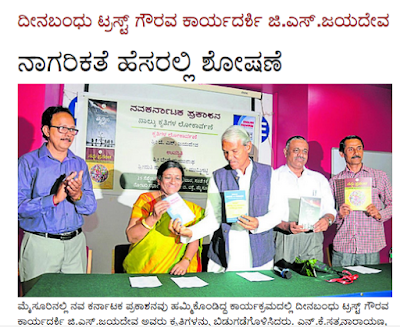
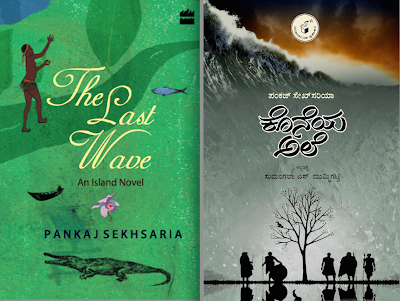
A report in Prajavani on the Mysuru release event of Koneya Ale (the Kannada translation of 'The Last Wave') and other books by Navakarnataka Publications!
The book is available in stores across Karnataka and online from the Navakarnataka site.
For the English books: https://tinyurl.com/yayjxugv
For signed copies you can write to thelastwave1@gmail.com


Published on October 02, 2018 07:08
September 4, 2018
Islands in Flux - Coimbatore
Islands in Flux - releasing in Coimbatore, Sept 12, 6 pm in association with ZOO, Mango Education and Sreevatsa Lunchbox
 For more details: https://themango.co/programs/connect/...
For more details: https://themango.co/programs/connect/...
Attendance is free, but registration is compulsory
 For more details: https://themango.co/programs/connect/...
For more details: https://themango.co/programs/connect/...Attendance is free, but registration is compulsory
Published on September 04, 2018 22:25
August 13, 2018
Bengaluru release of Koneya Ale - the Kannada translation of 'The Last Wave'
Friends in Bangalore...
The release of Koneya Ale (the Kannada translation by Sumangala Mummigatti of 'The Last Wave') at the hands of Sri Nagesh Hegde, at 4 pm, August 20, at the Navakarnataka Book Shop Kempegowda Road, Bangalore.
Copies of the book are available in stores and online: http://www.navakarnatakaonline.com/koneya-ale-the-last-wave
For copies of 'The Last Wave': https://tinyurl.com/y8ggv6l5
To order author signed copies and for further information, please write to thelastwave1@gmail.com
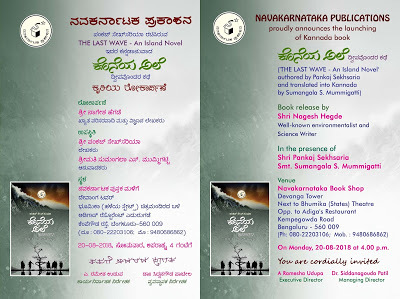
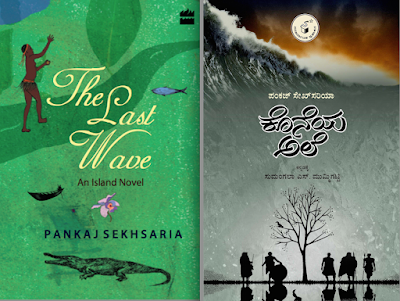
The release of Koneya Ale (the Kannada translation by Sumangala Mummigatti of 'The Last Wave') at the hands of Sri Nagesh Hegde, at 4 pm, August 20, at the Navakarnataka Book Shop Kempegowda Road, Bangalore.
Copies of the book are available in stores and online: http://www.navakarnatakaonline.com/koneya-ale-the-last-wave
For copies of 'The Last Wave': https://tinyurl.com/y8ggv6l5
To order author signed copies and for further information, please write to thelastwave1@gmail.com


Published on August 13, 2018 05:15
July 11, 2018
Koneya Ale - The Last Wave in Kannada
PRESS NOTE
Release of 'Koneya Ale', the Kannada translation of 'The Last Wave - an island novel'
Release:
Koneya Ale ಕೊನೆಯ ಅಲೆ : ದ್ವೀಪವೊಂದರ ಕಥೆ is a new translation into Kannada of researcher, photographer and author Pankaj Sekhsaria’s debut novel The Last Wave, a story deeply based on the people, ecology and history of the Andaman Islands. The English original was published in HarperCollins India in 2014 and has been critically acclaimed for telling the story of a place and a people that has escaped the popular imagination. Koneya Ale is the first translation of the book into another Indian language. Published by Navakarnataka Publications, the book was translated into Kannada by Sumangala Mummigatti.
Title: Koneya Ale ಕೊನೆಯ ಅಲೆ : ದ್ವೀಪವೊಂದರ ಕಥೆ
Author: Pankaj Sekhsaria
Translator: Sumangala Mummigatti
Publishers: Navakarnataka Publications Pvt. Ltd
Pages: 260
Price: Rs. 250
The book is available in stores across Karnataka and can also be ordered online from: http://www.navakarnatakaonline.com/koneya-ale-the-last-wave
Copies of the English original can be ordered online from: https://tinyurl.com/y8ggv6l5
To order author signed copies and for further information, please write to thelastwave1@gmail.com
Contact Details
Pankaj Sekhsaria, Author,
Email: psekhsaria@gmail.com
Sumangala Mummigatti, Translator
Email: s.mummigatti@gmail.com
Synopsis of the Book:
ಗುರಿಯಿಲ್ಲದೇ ಅಲೆಮಾರಿಯಂತೆ ಅಲೆದಾಡುತ್ತಿದ್ದ ಹರೀಶನಿಗೆ, ಅತ್ಯಂತ ಪುರಾತನವಾದ ಮತ್ತು ಅಪಾಯದಲ್ಲಿರುವ ಜರವಾ ಸಮುದಾಯದೊಂದಿಗೆ ಆಕಸ್ಮಿಕವಾಗಿ ಸಂಪರ್ಕವುಂಟಾಯಿತು. ಅಂಡಮಾನಿನ ಉಷ್ಣವಲಯದ ಮಳೆಕಾಡುಗಳ ಮೂಲ ನಿವಾಸಿಗಳಾದ ಜರವಾ ಜನಾಂಗದವರನ್ನು ಭೇಟಿಯಾದ ಹರೀಶನಿಗೆ, ಅವರ ಉಳಿಯುವಿಕೆಗೆ ಬೇಕಾದುದೆಲ್ಲವೂ ಸಾನಗೊಳ್ಳುತ್ತಿರುವುದನ್ನು ಕಂಡು ಆಘಾತವಾಯಿತು. ಅವರಿಗಾಗಿ ಏನನ್ನಾದರೂ ಮಾಡಬೇಕೆಂಬ ಹಂಬಲವೂ ಬೆಳೆಯಿತು. ಈ ಹಾದಿಯಲ್ಲಿ ಅವನಿಗೆ ಭೇಟಿಯಾದ ದೋಣಿಯ ನಾವಿಕ ಅಂಕಲ್ ಪ್ಯಾಮ್ ಎಪ್ಪತ್ತರ ಇಳಿ ವಯಸ್ಸಿನವರಾದರೂ ಹರೀಶನಿಗೆ ಒಳ್ಳೆಯ ಸ್ನೇಹಿತರಾದರು. ‘‘ಕರೀನ್’’ ಸಮುದಾಯದ ಅಂಕಲ್ ಪ್ಯಾಮ್ರ ತಂದೆಯನ್ನು 1920ರಲ್ಲಿ ಬ್ರಿಟಿಷರು ದ್ವೀಪಗಳಿಗೆ ಕರೆತಂದಿದ್ದರು.
ದ್ವೀಪದಲ್ಲಿ ಹರೀಶನಿಗೆ ಸೀಮಾಳ ಭೇಟಿಯೂ ಆಗುತ್ತದೆ. ಸ್ಥಳೀಯ ಜನ್ಯಳಾದ ಸೀಮಾಳ ತಾಯಿ ತಂದೆಯರು ಪೋರ್ಟ್ಬ್ಲೇರಿನ ಕುಖ್ಯಾತ ಸೆಲ್ಯುಲರ್ ಜೈಲಿನಲ್ಲಿ ಖೈದಿಗಳಾಗಿದ್ದವರು. ಆಕೆಯ ಕಾಲದ ಇತರ ಯುವಕ-ಯುವತಿಯರಂತೆ, ವಿದ್ಯಾವಂತಳೂ, ಜಗತ್ತನ್ನು ಅರಿತವಳೂ ಆಗಿದ್ದ ಸೀಮಾ ಮರಳಿ ಮನೆಗೆ ಬರಬೇಕೆಂಬ ಹಂಬಲದಲ್ಲಿ ಮಾತ್ರ ವಿಭಿನ್ನಳಾಗಿದ್ದಳು. ಜರವಾ ಜನಾಂಗದ ಬಗೆಗೆ ಹರೀಶನಿಗಿದ್ದ ಕಳಕಳಿ, ದ್ವೀಪಗಳ ಬಗೆಗಿನ ಅವನ ಪ್ರೀತಿ, ಜರವಾಗಳನ್ನು ಅರ್ಥ ಮಾಡಿಕೊಳ್ಳಲು ಅವರು ಜೊತೆಯಾಗಿ ಕಳೆದ ಸಮಯ ಹಾಗೂ ಆಕೆಯ ಭಗ್ನ ಪ್ರೇಮ ಎಲ್ಲವೂ ಒಂದಾಗಿ ಸೀಮಾಳನ್ನು ಹರೀಶನತ್ತ ಸೆಳೆಯಿತು. ಎಲ್ಲವೂ ಸರಿಯಾದ ಹಾದಿಯಲ್ಲಿ ಸಾಗುತ್ತಿವೆ. ಎರಡು ಸಮಾನಾಂತರ ಬದುಕುಗಳು ಸೇರುತ್ತಿವೆ ಎನ್ನುವಾಗ ಅನಾಮಿಕ ಸ್ಪರ್ಧಿಯೊಂದರ ಪ್ರವೇಶವಾಯಿತು. ಅದುವೇ 2004ರ
ಡಿಸೆಂಬರ್ನಲ್ಲಿ ಅಪ್ಪಳಿಸಿದ ‘‘ದೈತ್ಯ ಸುನಾಮಿ’’. ‘‘ಕೊನೆಯ ಅಲೆ’’ ಕಳೆದುಹೋದ ಈ ಪ್ರೇಮಿಗಳ, ಜನಾಂಗವೊಂದರ ಸಂಸ್ಕೃತಿ, ಇತಿಹಾಸ ಮತ್ತು ಕಾಲನ ಹೊಡೆತಕ್ಕೆ ಸಿಲುಕಿ ನಲುಗಲು ಸದಾ ಸಿದ್ಧವಾಗಿರುವ ಪರಿಸರ ವ್ಯವಸ್ಥೆಯೊಂದರ ಕಥೆಯಾಗಿದೆ.
English Synopsis:
Ever the aimless drifter, Harish finds the anchor his life needs in a chance encounter with members of the ancient - and threatened - Jarawa community: the 'original people' of the Andaman Islands and its tropical rainforests. As he observes the slow but sure destruction of everything the Jarawa need for their survival, Harish is moved by a need to understand, to do something. His unlikely friend and partner on this quest is Uncle Pame, a seventy-year-old Karen boatman whose father was brought to the islands from Burma by the British in the 1920s. The islands also bring him to Seema, a 'local born' - a descendant of the convicts who were lodged in the infamous Cellular jail of Port Blair. As many things seem to fall in place and parallel journeys converge, an unknown contender appears: the giant tsunami of December 2004. The Last Wave is a story of lost loves, but also of a culture, a community, an ecology poised on the sharp edge of time and history.
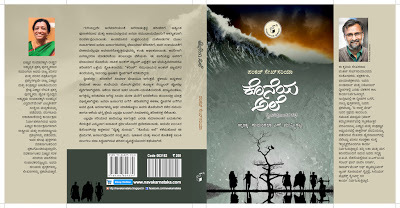
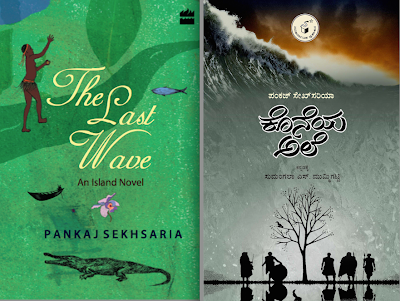
Release of 'Koneya Ale', the Kannada translation of 'The Last Wave - an island novel'
Release:
Koneya Ale ಕೊನೆಯ ಅಲೆ : ದ್ವೀಪವೊಂದರ ಕಥೆ is a new translation into Kannada of researcher, photographer and author Pankaj Sekhsaria’s debut novel The Last Wave, a story deeply based on the people, ecology and history of the Andaman Islands. The English original was published in HarperCollins India in 2014 and has been critically acclaimed for telling the story of a place and a people that has escaped the popular imagination. Koneya Ale is the first translation of the book into another Indian language. Published by Navakarnataka Publications, the book was translated into Kannada by Sumangala Mummigatti.
Title: Koneya Ale ಕೊನೆಯ ಅಲೆ : ದ್ವೀಪವೊಂದರ ಕಥೆ
Author: Pankaj Sekhsaria
Translator: Sumangala Mummigatti
Publishers: Navakarnataka Publications Pvt. Ltd
Pages: 260
Price: Rs. 250
The book is available in stores across Karnataka and can also be ordered online from: http://www.navakarnatakaonline.com/koneya-ale-the-last-wave
Copies of the English original can be ordered online from: https://tinyurl.com/y8ggv6l5
To order author signed copies and for further information, please write to thelastwave1@gmail.com
Contact Details
Pankaj Sekhsaria, Author,
Email: psekhsaria@gmail.com
Sumangala Mummigatti, Translator
Email: s.mummigatti@gmail.com
Synopsis of the Book:
ಗುರಿಯಿಲ್ಲದೇ ಅಲೆಮಾರಿಯಂತೆ ಅಲೆದಾಡುತ್ತಿದ್ದ ಹರೀಶನಿಗೆ, ಅತ್ಯಂತ ಪುರಾತನವಾದ ಮತ್ತು ಅಪಾಯದಲ್ಲಿರುವ ಜರವಾ ಸಮುದಾಯದೊಂದಿಗೆ ಆಕಸ್ಮಿಕವಾಗಿ ಸಂಪರ್ಕವುಂಟಾಯಿತು. ಅಂಡಮಾನಿನ ಉಷ್ಣವಲಯದ ಮಳೆಕಾಡುಗಳ ಮೂಲ ನಿವಾಸಿಗಳಾದ ಜರವಾ ಜನಾಂಗದವರನ್ನು ಭೇಟಿಯಾದ ಹರೀಶನಿಗೆ, ಅವರ ಉಳಿಯುವಿಕೆಗೆ ಬೇಕಾದುದೆಲ್ಲವೂ ಸಾನಗೊಳ್ಳುತ್ತಿರುವುದನ್ನು ಕಂಡು ಆಘಾತವಾಯಿತು. ಅವರಿಗಾಗಿ ಏನನ್ನಾದರೂ ಮಾಡಬೇಕೆಂಬ ಹಂಬಲವೂ ಬೆಳೆಯಿತು. ಈ ಹಾದಿಯಲ್ಲಿ ಅವನಿಗೆ ಭೇಟಿಯಾದ ದೋಣಿಯ ನಾವಿಕ ಅಂಕಲ್ ಪ್ಯಾಮ್ ಎಪ್ಪತ್ತರ ಇಳಿ ವಯಸ್ಸಿನವರಾದರೂ ಹರೀಶನಿಗೆ ಒಳ್ಳೆಯ ಸ್ನೇಹಿತರಾದರು. ‘‘ಕರೀನ್’’ ಸಮುದಾಯದ ಅಂಕಲ್ ಪ್ಯಾಮ್ರ ತಂದೆಯನ್ನು 1920ರಲ್ಲಿ ಬ್ರಿಟಿಷರು ದ್ವೀಪಗಳಿಗೆ ಕರೆತಂದಿದ್ದರು.
ದ್ವೀಪದಲ್ಲಿ ಹರೀಶನಿಗೆ ಸೀಮಾಳ ಭೇಟಿಯೂ ಆಗುತ್ತದೆ. ಸ್ಥಳೀಯ ಜನ್ಯಳಾದ ಸೀಮಾಳ ತಾಯಿ ತಂದೆಯರು ಪೋರ್ಟ್ಬ್ಲೇರಿನ ಕುಖ್ಯಾತ ಸೆಲ್ಯುಲರ್ ಜೈಲಿನಲ್ಲಿ ಖೈದಿಗಳಾಗಿದ್ದವರು. ಆಕೆಯ ಕಾಲದ ಇತರ ಯುವಕ-ಯುವತಿಯರಂತೆ, ವಿದ್ಯಾವಂತಳೂ, ಜಗತ್ತನ್ನು ಅರಿತವಳೂ ಆಗಿದ್ದ ಸೀಮಾ ಮರಳಿ ಮನೆಗೆ ಬರಬೇಕೆಂಬ ಹಂಬಲದಲ್ಲಿ ಮಾತ್ರ ವಿಭಿನ್ನಳಾಗಿದ್ದಳು. ಜರವಾ ಜನಾಂಗದ ಬಗೆಗೆ ಹರೀಶನಿಗಿದ್ದ ಕಳಕಳಿ, ದ್ವೀಪಗಳ ಬಗೆಗಿನ ಅವನ ಪ್ರೀತಿ, ಜರವಾಗಳನ್ನು ಅರ್ಥ ಮಾಡಿಕೊಳ್ಳಲು ಅವರು ಜೊತೆಯಾಗಿ ಕಳೆದ ಸಮಯ ಹಾಗೂ ಆಕೆಯ ಭಗ್ನ ಪ್ರೇಮ ಎಲ್ಲವೂ ಒಂದಾಗಿ ಸೀಮಾಳನ್ನು ಹರೀಶನತ್ತ ಸೆಳೆಯಿತು. ಎಲ್ಲವೂ ಸರಿಯಾದ ಹಾದಿಯಲ್ಲಿ ಸಾಗುತ್ತಿವೆ. ಎರಡು ಸಮಾನಾಂತರ ಬದುಕುಗಳು ಸೇರುತ್ತಿವೆ ಎನ್ನುವಾಗ ಅನಾಮಿಕ ಸ್ಪರ್ಧಿಯೊಂದರ ಪ್ರವೇಶವಾಯಿತು. ಅದುವೇ 2004ರ
ಡಿಸೆಂಬರ್ನಲ್ಲಿ ಅಪ್ಪಳಿಸಿದ ‘‘ದೈತ್ಯ ಸುನಾಮಿ’’. ‘‘ಕೊನೆಯ ಅಲೆ’’ ಕಳೆದುಹೋದ ಈ ಪ್ರೇಮಿಗಳ, ಜನಾಂಗವೊಂದರ ಸಂಸ್ಕೃತಿ, ಇತಿಹಾಸ ಮತ್ತು ಕಾಲನ ಹೊಡೆತಕ್ಕೆ ಸಿಲುಕಿ ನಲುಗಲು ಸದಾ ಸಿದ್ಧವಾಗಿರುವ ಪರಿಸರ ವ್ಯವಸ್ಥೆಯೊಂದರ ಕಥೆಯಾಗಿದೆ.
English Synopsis:
Ever the aimless drifter, Harish finds the anchor his life needs in a chance encounter with members of the ancient - and threatened - Jarawa community: the 'original people' of the Andaman Islands and its tropical rainforests. As he observes the slow but sure destruction of everything the Jarawa need for their survival, Harish is moved by a need to understand, to do something. His unlikely friend and partner on this quest is Uncle Pame, a seventy-year-old Karen boatman whose father was brought to the islands from Burma by the British in the 1920s. The islands also bring him to Seema, a 'local born' - a descendant of the convicts who were lodged in the infamous Cellular jail of Port Blair. As many things seem to fall in place and parallel journeys converge, an unknown contender appears: the giant tsunami of December 2004. The Last Wave is a story of lost loves, but also of a culture, a community, an ecology poised on the sharp edge of time and history.


Published on July 11, 2018 04:40
June 12, 2018
Presentation in Pune, organised by Wild Pune
Friends in Pune...
June 15, Friday, 6.30 pm, Indradhanush Hall, Rajendra Nagar, Opp Sachin Tendulkar Park!
To order copies of the book online: https://tinyurl.com/y8ggv6l5
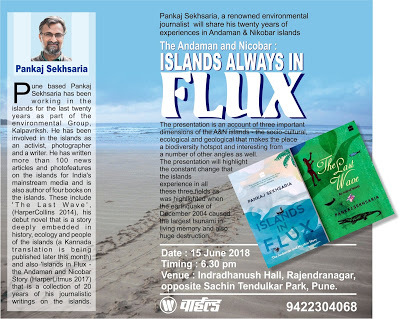
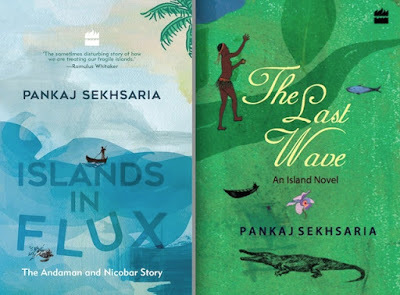
June 15, Friday, 6.30 pm, Indradhanush Hall, Rajendra Nagar, Opp Sachin Tendulkar Park!
To order copies of the book online: https://tinyurl.com/y8ggv6l5


Published on June 12, 2018 02:59
May 30, 2018
Koneya Ale - 'The Last Wave' now in translation in Kannada
Available now for pre-sale at a 20% discount!
Koneya Ale - The Kannada Translation of 'The Last Wave' - translated by Sumangala Mummigatti, published by Navakarnataka publishers,
Buy here: http://www.navakarnatakaonline.com/koneya-ale-the-last-wave
For more details and for author signed copies pls write to thelastwave1@gmail.com
And to order copies of The Last Wave in English: To order copies : https://tinyurl.com/y8ggv6l5
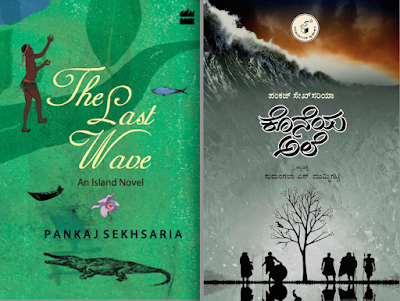
Koneya Ale - The Kannada Translation of 'The Last Wave' - translated by Sumangala Mummigatti, published by Navakarnataka publishers,
Buy here: http://www.navakarnatakaonline.com/koneya-ale-the-last-wave
For more details and for author signed copies pls write to thelastwave1@gmail.com
And to order copies of The Last Wave in English: To order copies : https://tinyurl.com/y8ggv6l5

Published on May 30, 2018 03:03
December 25, 2017
In the next one month!
SO,
Over the next few weeks, there are a number of very interesting A&N things I'm going to be doing in different parts... Pune, Hyderabad and Jaipur. Do come by if you are around; the details follow:
1) Dec 30 in Pune; Release by Deepak Dalal of my new book 'Islands in Flux - the Andaman and Nicobar story' followed by an illustrated presentation on the islands. Happens at Pagdandi, Baner, Saturday, December 30, 11 am. Also a small photo exhibition on the islands at Pagdandi. Event details: https://www.facebook.com/events/155050761799769/
2) 4th January Onwards in Hyderabad: Will be part of the Krishnakriti Foundation's 'Mapping Frontiers' art exhibition curated by Lina Vincent Sunish that brings together some of the A&N photograph scrolls printed on silk under the title 'Mapped Together - The A&N islands'. This opens at the Goethe Zentrum in the evening on the 4th of Jan and will be up for a full fortnight. Details: https://www.facebook.com/krishnakritifoundation/photos/a.766515876696639.1073741827.184492544898978/1913580218656860/?type=3&theater
3) 28th Jan - at the Jaipur Lit Fest, will be in a conversation on the islands and 'The Last Wave' and 'Islands in Flux' with Amita Baviskar #jlf Schedule: https://jaipurliteraturefestival.org/programme
https://jaipurliteraturefestival.org/speak…/pankaj-sekhsaria
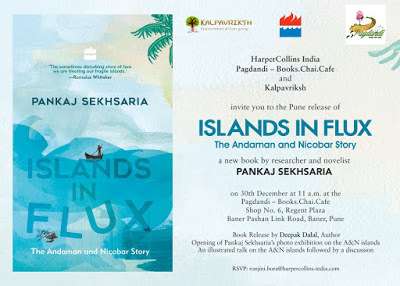
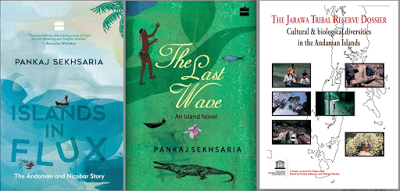
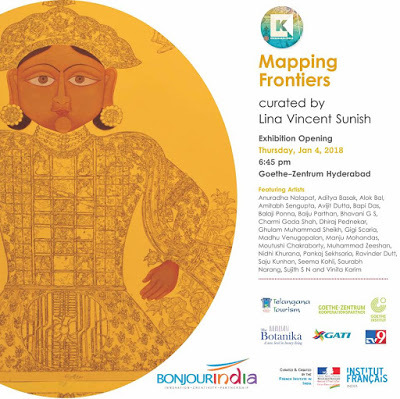
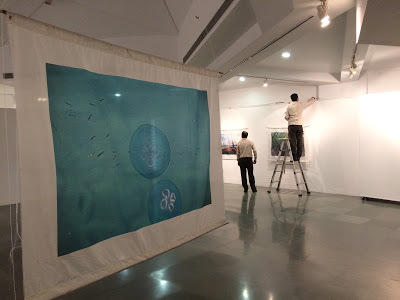
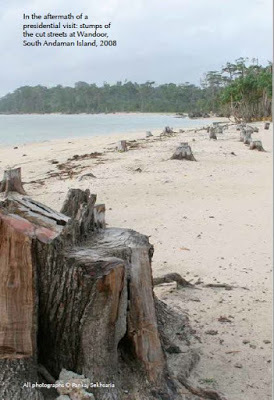
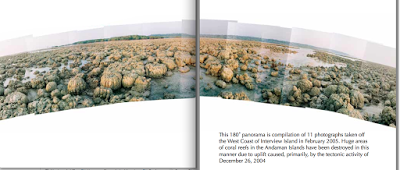
Over the next few weeks, there are a number of very interesting A&N things I'm going to be doing in different parts... Pune, Hyderabad and Jaipur. Do come by if you are around; the details follow:
1) Dec 30 in Pune; Release by Deepak Dalal of my new book 'Islands in Flux - the Andaman and Nicobar story' followed by an illustrated presentation on the islands. Happens at Pagdandi, Baner, Saturday, December 30, 11 am. Also a small photo exhibition on the islands at Pagdandi. Event details: https://www.facebook.com/events/155050761799769/
2) 4th January Onwards in Hyderabad: Will be part of the Krishnakriti Foundation's 'Mapping Frontiers' art exhibition curated by Lina Vincent Sunish that brings together some of the A&N photograph scrolls printed on silk under the title 'Mapped Together - The A&N islands'. This opens at the Goethe Zentrum in the evening on the 4th of Jan and will be up for a full fortnight. Details: https://www.facebook.com/krishnakritifoundation/photos/a.766515876696639.1073741827.184492544898978/1913580218656860/?type=3&theater
3) 28th Jan - at the Jaipur Lit Fest, will be in a conversation on the islands and 'The Last Wave' and 'Islands in Flux' with Amita Baviskar #jlf Schedule: https://jaipurliteraturefestival.org/programme
https://jaipurliteraturefestival.org/speak…/pankaj-sekhsaria






Published on December 25, 2017 21:16
November 12, 2017
The story teller of the islands
Home » Leisure » My Daughters' MumLast Published: Sat, Nov 11 2017. 12 53 AM ISTThe storyteller of the islandsPankaj Sekhsaria on how his disappointment as an activist attempting to protect the ancient rainforests and Jarawa tribals of the Andaman islands, led him to write a novel, ‘The Last Wave—An Island Novel’, and tell the same story differently
Natasha Badhwarhttp://www.livemint.com/Leisure/c3LVl...
When Pankaj Sekhsaria first travelled to the Andaman and Nicobar Islands as a student, he had little idea of how enduring his engagement with the islands would turn out to be. Over the last two and a half decades, he has been an environmental activist, a journalist, researcher, photographer and author—and in each of these roles, he has tried to unravel and communicate the complex issues that define the existence of the islands, its people and environment.“What is the meta question to be asked about the Andaman and Nicobar Islands?” asks Sekhsaria rhetorically. “Broadly speaking, any system we are part of consists of three elements—the socio-cultural-political, the ecological and the geological framework. On the islands, all these three are always in flux, and we need to find a language to articulate and account for how they influence each other. All development planning needs to take this constant change into account.”
As a member of the Kalpavriksh Environment Action Group, Sekhsaria was part of the team of three non-government organizations whose petition before the Supreme Court resulted in orders for the closure of the Andaman Trunk Road (ATR) in 2002. This ambitious road on the Andaman island links Port Blair in the south to Diglipur in the north. It also cuts across the reserved rainforests that are home to the reclusive Jarawa tribals, exposing both the ancient rainforest and the Jarawas to exploitation. It was a vector, both metaphorical and literal, that brought in a number of undesirable and uncontrollable influences, on the one hand, and took away valuable resources like timber on the other.
The victory in the Supreme Court remained short-lived. Some of the orders, including those for the closure of the ATR, have never been implemented by the administration. The indigenous tribes that go back over 30,000 years continue to be vulnerable to the state and to ideas of development and mainstreaming that have not had any great successful precedence, certainly not in the case of these islands.
After years of trying to influence change as an activist and journalist, Sekhsaria published a novel, The Last Wave—An Island Novel, in 2014.
“The fiction writing came from the disappointment of the activist,” shares Sekhsaria. “The question became—can the same story be told differently?
“As a journalist or activist, there is a particular form in which the story must be told. There is a limited reach. Can a different genre of writing tell the same story to the same people and make some headway?”Sekhsaria recounts the events that led to his book. There was the failure of the administration to implement the Supreme Court order, followed by the devastation suffered after a tsunami in December 2004. Around that time, Sekhsaria was also reading Amitav Ghosh’s The Hungry Tide, a novel set in the vulnerable archipelago of islands in the Bay of Bengal.
“It was a little like a tubelight switching on in my head. Perhaps the story of the islands can also be told in the same way. When you are involved with any work for a long time, you understand that it is multilayered. As an activist, you end up portraying certain institutions as problematic. But, in reality, things are more ambiguous. The space in the grey is where everything lies. There is no one villain.
“What fiction allows you to do is explore motivations and actions in a nuanced way. Good fiction demands that. There are certain voices that are not heard in a certain context, and I wanted to express their points of view and perspective.”
In a chapter in The Last Wave, Sekhsaria writes about the connect, or lack of it, between the ancient community that faces inevitable annihilation and those whose actions are leading up to it.
“The other original islanders, the Onge and the Great Andamanese, who had cohabited these forests with the Jarawas, had all but gone. The Jarawa were now being dragged down the same path. There was the evidence and the weight of history—the Jarawa would be pushed down the road to annihilation—that was the word David had used in their first meeting. What do the annihilated feel? That was not the question Harish wanted to ask. What does the annihilator feel? How would he, himself, feel when the Jarawa were no more? Not because he wanted them to be vanquished, but because he could do nothing about their slide into oblivion. The world he belonged to did not want to annihilate the Jarawa, but it did not seem to know better.”
Sekhsaria recounts a recent exchange with a friend from Port Blair. “Hamara wajood kya hai,” asks the friend. “What is our relevance in the larger world?”
Like all islands, this archipelago has its own allure in the imagination of India’s mainland population. Besides the attraction of its beaches, forests and sea, there is the historical connection to the freedom movement and the Cellular Jail. The islands remain a strategic outpost for the defence services.
Where do the diverse people of the islands fit within this framework? Will they continue to be on the fringes of the national consciousness, their aspirations and conflicts forever marginalized?
Over the years, says Sekhsaria, he began to question what the core conflict between various people’s interests really was. “I realized that somewhere we are dealing with a battle of ideas and ideology and knowledge and knowledge systems. There is a certain hierarchy of knowledge creation. How can we say the tribals’ knowledge is less than the scientists’? They understand differently.”
“Has there been a difference in the way the book has been received in mainland India and on the islands?” I ask Sekhsaria.
“For many of them, it’s as if the story of the islands has now been told. There are friends who say that reading this book makes many people change their perspective of their own islands. It is an amazing thing to hear and extremely humbling at the same time.
“So what the activist was not able to communicate, in a way the fiction writer could do,” says Sekhsaria. “As an activist, your positions are pretty clear. You broadly take a stand and draw a border between right and wrong. Either the road is closed or the road is open. Either something is a violation or it is not a violation. An able chronicler, on the other hand, tells you all the stories.”
Sekhsaria explains, for instance, that the ATR is a central element in the novel. The people who will be affected negatively by the closure of the road have a strong voice in the book, explaining why the road should not be closed. Why it is not fair on them.
“It makes me wonder if it is possible that we become sympathetic to the other side when we feel that our own point of view has been understood fairly?”
As Sekhsaria articulates the eternal conflict between outsiders and insiders, the push for development and the pull of conservation, the island story begins to sound like a microcosm of the wider world. Conflicting interests, a hierarchy of power that seems immovable, a rapidly deteriorating environment, and entire societies teetering on the brink of annihilation.“Why does it happen the way it does? Is it completely unavoidable? Are we all, in some sense, prisoners of our own context? We feel that there is agency but we are also caught up in our own biases,” Sekhsaria says. “With time, you realize that as individuals we are all as compromised as anybody else is.”
After touring with his fiction and non-fiction books, Sekhsaria has also designed a travelling exhibition of photographs from the island. He experimented with printing images on a large canvas of silk fabric and suspending them, so they moved in the air as light came through the prints. These photo installations are part of The Story of Space 2017, a science-meets-art festival in Panaji, on till 19 November.
“I wanted to create another space of engagement between mainland people and the islands,” says Sekhsaria. “The same words and photographs that I had used in court petitions or journalistic articles were now available in a new form—seeking to create a different experience and reflect the idea of flux and fragility. It is the same, yet it is new.”
Just like the islands, which are also always in flux, responding simultaneously to destruction and renewal at the hands of nature.
Natasha Badhwar is a film-maker, media trainer and author of the book My Daughters’ Mum.
She tweets at @natashabadhwar
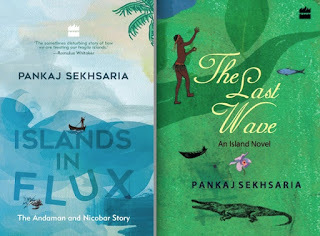
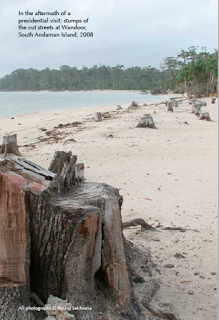
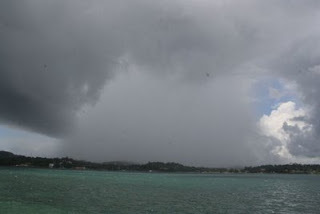
Published on November 12, 2017 23:23
October 8, 2017
Scroll.in review of 'Islands in Flux - the Andaman and Nicobar Story
This book tells us why we need to talk about the Andaman and Nicobar islands urgently The little-known history of the islands is accessible and engrossing in campaigner Pankaj Sekhsaria’s ‘Islands in Flux’. Sep 30, 2017 · 12:30 pm Urvashi Bahuguna https://scroll.in/article/841092/this...
For over two decades, researcher and campaigner Pankaj Sekhsaria has been writing about the state of environmental, social and political affairs in the Andaman and Nicobar Islands. Islands in Flux: The Andaman and Nicobar Story brings together the bulk of his reportage since 2000 on key issues affecting the islands. Though this isn’t (as the author himself notes) a comprehensive history of the islands in that time frame, it is a solid beginning in understanding the unique conditions of an area whose complexities are largely ignored by the mainland.
Sekhsaria is quick to point out that the islands are misunderstood and underrepresented in the Indian media. He refers to the “marginalisation of the islands in the nation’s consciousness.” The original communities of the islands are the Great Andamanese, the Onge, the Jarawa, and the Sentinelese. In the early years of India’s independence, the government devised a plan to colonise the islands. As a part of this plan, thousands of settlers from the mainland were incentivised with land and timber to settle in the island. The timber-rich forests were opened up to exploitation. In the last century, which has seen unprecedented population growth at the islands, approximately a 10th of the forested land has been wiped out.
Island in dangerThe islands are home to unique flora and fauna which have been endangered by aggressive developmental policies. In one of several examples, the logging is noted to have threatened the populations of the saltwater crocodile and the endemic wild pig. We learn that the islands are an important nesting spot for turtles, including the giant leatherback turtle which is critically endangered, which is threatened by sand mining and a growing population of dogs.
The colonisation of the islands by mainlanders has also had the effect of drastically endangering and outnumbering the indigenous, tribal population. Sekhsaria notes in one example:
One of the other themes explored in Islands in Flux is the role of naming in colonisation. He points out that a singular theory is popular on the mainland about the origin of the name Andaman – that it comes from the Hindu figure of Hanuman – even though historical accounts document various theories. He criticises the calls to rename the islands after freedom fighters as dismissive of the identity and history of the local tribes. The islands had already been re-christened by the British. Sekhsaria says: “If the real and complete history of the islands is ever written, the British would be no more than a page and India could only be a paragraph.”
Sekhsaria takes us through the complex journey of the islands in the last two decades. In response to a distressing report on the state of the islands’ forests by a court-appointed commission, the Supreme Court ruled that sand-mining operations had to be phased out and the Andaman Trunk Road closed.
Outsiders versus insiders But as we read on, we discover that economic and political interests led to a wilful non-compliance of these orders. Throughout the book, the author highlights how the tribes’ interests are not protected, their land and people exploited and how they are not consulted in policy decisions.
He narrates the conflicts over land between the settlers and the tribes. In particular, the story of the Jarawa people is told in animated detail as small groups of them begin to unexpectedly emerge from the territory they had earlier fiercely kept themselves to. No one was allowed to enter their land, and they did not venture out either until the late 90s. This tribe has dwindled to a meagre 250 individuals. As Sekhsaria puts it, for them it “is literally a struggle for survival and against extinction.”
The little-known history of the islands is accessible and engrossing in Sekhsaria’s sympathetic, painstaking prose. Sekhsaria is hopeful that if change arrives, even at this late juncture, it will save the tribes from extinction and the islands from complete decimation. This is an important book for its lessons on the environment, on India’s uneasy and problematic relationship with some of its territories and on the implications of forcing development and modernisation on indigenous communities.
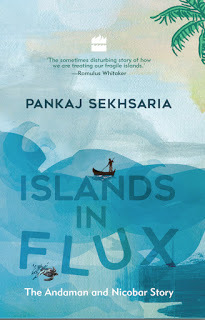 The book is available in stores and via amazon: http://tinyurl.com/y9pnz9ml
The book is available in stores and via amazon: http://tinyurl.com/y9pnz9ml
Islands in Flux: The Andaman and Nicobar Story, Pankaj Sekhsaria, Harper Collins.
For over two decades, researcher and campaigner Pankaj Sekhsaria has been writing about the state of environmental, social and political affairs in the Andaman and Nicobar Islands. Islands in Flux: The Andaman and Nicobar Story brings together the bulk of his reportage since 2000 on key issues affecting the islands. Though this isn’t (as the author himself notes) a comprehensive history of the islands in that time frame, it is a solid beginning in understanding the unique conditions of an area whose complexities are largely ignored by the mainland.
Sekhsaria is quick to point out that the islands are misunderstood and underrepresented in the Indian media. He refers to the “marginalisation of the islands in the nation’s consciousness.” The original communities of the islands are the Great Andamanese, the Onge, the Jarawa, and the Sentinelese. In the early years of India’s independence, the government devised a plan to colonise the islands. As a part of this plan, thousands of settlers from the mainland were incentivised with land and timber to settle in the island. The timber-rich forests were opened up to exploitation. In the last century, which has seen unprecedented population growth at the islands, approximately a 10th of the forested land has been wiped out.
Island in dangerThe islands are home to unique flora and fauna which have been endangered by aggressive developmental policies. In one of several examples, the logging is noted to have threatened the populations of the saltwater crocodile and the endemic wild pig. We learn that the islands are an important nesting spot for turtles, including the giant leatherback turtle which is critically endangered, which is threatened by sand mining and a growing population of dogs.
The colonisation of the islands by mainlanders has also had the effect of drastically endangering and outnumbering the indigenous, tribal population. Sekhsaria notes in one example:
In the early 1960s, the Onge were the sole inhabitants of Little Andaman. Today, for each Onge, there are at least 120 outsiders, and this imbalance is rapidly increasing.Of the first three tribes mentioned above, the Jarawa tribe survived the onslaught of forced development the longest. Sekhsaria narrates how their “hostility and self-maintained isolation in the impenetrable rainforests” insulated them from the changing times. But the construction of the Andaman Trunk Road in the heart of their territory forced them to slowly abandon their self-contained way of life.
One of the other themes explored in Islands in Flux is the role of naming in colonisation. He points out that a singular theory is popular on the mainland about the origin of the name Andaman – that it comes from the Hindu figure of Hanuman – even though historical accounts document various theories. He criticises the calls to rename the islands after freedom fighters as dismissive of the identity and history of the local tribes. The islands had already been re-christened by the British. Sekhsaria says: “If the real and complete history of the islands is ever written, the British would be no more than a page and India could only be a paragraph.”
Sekhsaria takes us through the complex journey of the islands in the last two decades. In response to a distressing report on the state of the islands’ forests by a court-appointed commission, the Supreme Court ruled that sand-mining operations had to be phased out and the Andaman Trunk Road closed.
Outsiders versus insiders But as we read on, we discover that economic and political interests led to a wilful non-compliance of these orders. Throughout the book, the author highlights how the tribes’ interests are not protected, their land and people exploited and how they are not consulted in policy decisions.
He narrates the conflicts over land between the settlers and the tribes. In particular, the story of the Jarawa people is told in animated detail as small groups of them begin to unexpectedly emerge from the territory they had earlier fiercely kept themselves to. No one was allowed to enter their land, and they did not venture out either until the late 90s. This tribe has dwindled to a meagre 250 individuals. As Sekhsaria puts it, for them it “is literally a struggle for survival and against extinction.”
The little-known history of the islands is accessible and engrossing in Sekhsaria’s sympathetic, painstaking prose. Sekhsaria is hopeful that if change arrives, even at this late juncture, it will save the tribes from extinction and the islands from complete decimation. This is an important book for its lessons on the environment, on India’s uneasy and problematic relationship with some of its territories and on the implications of forcing development and modernisation on indigenous communities.
 The book is available in stores and via amazon: http://tinyurl.com/y9pnz9ml
The book is available in stores and via amazon: http://tinyurl.com/y9pnz9mlIslands in Flux: The Andaman and Nicobar Story, Pankaj Sekhsaria, Harper Collins.
Published on October 08, 2017 04:18
Protected Area Update - 129, October 2017
Dear Friends,
Pls see below for the list of contents and the editorial from the new
issue of the Protected Area Update (Vol. XXIII, No. 5, October 2017 (No.
129). Click here to download the pdf of the issue
To receive the full issue as a pdf or as a print copy via
the post, please write to me at psekhsaria@gmail.com
I would also like to take this opportunity to request for your financial
support for the PA Update. Of the annual budget of about Rs. 7 lakhs
we've managed to raise only about half at the moment. All donations and
contributions, big and small, are welcome. Pls do consider helping us
out pls write to me at the above mentioned email id for any further
details that you might need.
Many thanks
Pankaj Sekhsaria
Editor, Protected Area Update
C/o Kalpavriksh
---
PROTECTED AREA UPDATE
News and Information from protected areas in India and South Asia
Vol. XXIII, No. 5
October 2017 (No. 129)
LIST OF CONTENTS
EDITORIAL
Systemic injuries, band-aid solutions
NEWS FROM INDIAN STATES
ASSAM
- SC asks for explanation on permission for oil and gas drilling beneath
Dibru-Saikhowa NP
- Eviction drive to remove encroachers from Amchang WLS
GOA
- Goa excluded from NGT’s Pune bench; activists condemn the move
GUJARAT
- Number of lions in Gir touches 650
HIMACHAL PRADESH
- Biodiversity management committees set up in 366 gram panchayats
JHARKHAND
- Government approves diversion of 1000 ha land from Palamau TR
- Palamau TR brings captive sambars to increase tigers’ prey base
KARNATAKA
- Kali TR to lose 75% of its ESZ; state bows to public pressure
- Policy for private conservancies for wildlife conservation adjoining PAs
- Over 3000 families displaced from Nagarahole NP to be rehabilitated;
NGO express concern over implementation of plan
- Stop to illegal electrification work in Bhimgad WLS
- New management plan for otter conservation in Tungabhadra
KERALA
- Institute for Western Ghats wildlife research
- Survey records over 120 species of amphibians and reptiles in Periyar TR
- 58 tigers in Periyar and Parambikulam TRs
- 400+ families relocated from Wayanad WLS
- Two new species of earthworm discovered in Western Ghats
MAHARASHTRA
- NHAI to build only one wildlife underpass near Tipeshwar WLS
- High-level committee to decide about tiger translocation
ODISHA
- Advance payment for human kills by wildlife
RAJASTHAN
- NBWL denotifies over 400 ha of forest from buffer of Ranthambhore TR
for mining
TAMIL NADU
- 60 Irular families evicted from buffer zone of Mudumalai TR
TELANGANA
- NBWL diverts tiger corridor for irrigation project; asks for 16
eco-bridges to avoid fragmentation
UTTAR PRADESH
- Build toilets to curb human-tiger conflict in Pilibhit: Chief Minister
NATIONAL NEWS FROM INDIA
- Tiger cell at WII gets three years extention
- Over 27,000 wild elephants in India; highest number of 6,049 in Karnataka
- Over 15% of species in India threatened: IUCN
- Dr. Mahesh Sharma takes charge as Minister of State in MoEFCC
- Centre seeks Supreme Court’s approval for cheetah re-introduction
- One person killed a day in wildlife attacks in India
- 12 important mangroves forests of the country identified
- Exotic species invading PAs: Minister
- Meeting held to discuss, curb wildlife trafficking using postal services
- SC asks Centre to consider suggestions on safe corridors for wild animals
- Eurasian otter presence confirmed in the trans-Himalayas
- Finance Act dilutes the NGT Act says Jairam Ramesh; SC issues notice
to Centre
- Inclusion of Net Present Value of diverted forest in
cost-benefit-analysis mandatory; - - - NPV to be 10 and five times more
than normal for NP and WLS respectively
- NGT asks MoEFCC to prepare a policy for prevention of forest fires
- More than 700 projects awaiting environmental clearance: Minister
- SC questions Centre over reduction of ESZ by 100 times
SOUTH ASIA
Nepal/India
- 50 rhino calves swept away from Nepal to India; eight returned
IMPORTANT BIRD AREAS UPDATE
MANIPUR
- Call to decommission the Ithai dam
RAJASTHAN
- Openbill storks abandon nesting in Keoladeo NP because of water shortage
A DECADE AGO
PERSPECTIVE
Why I care about the KBR National Park?
--
EDITORIAL
'Systemic injuries, band-aid solutions'
Even a quick survey of the conservation scenario in the country today
makes one thing rather crystal clear – that the imperatives of
conservation cannot (will not!) be allowed to come in the way of
industrialization projects and economic growth. This, in fact, has
become the defining narrative, and PAs are more in the news for policy
that is constantly being diluted to make clearances and permissions
easier; for railway lines, roads and canals that will cut through
forests and other habitat; and for land in PAs (and elsewhere too) being
made available for mining, dams, and infrastructure projects.
We have in this issue of the PA Update, like we’ve always had in the
past, a number of such examples: of the National Green Tribunal (NGT)
being undermined by structural change, of land around tiger reserves
like Ranthambhore and Palamau being made available for mining and dam
projects and of linear intrusions being approved in PAs in Maharashtra
and Telangana.
There are two different kinds of narratives that seek to justify these
developments. The first and the more blatant one articulates explicitly
that PAs, environmental regulation and such concerns are impediments in
the ‘development’ of the country. The other is the more confused and
self-contradictory one. It pretends to be concerned even as it goes
about its job of undermining precisely these concerns.
If offers, in cities for example, to transplant full-grown trees because
roads have to be widened and growth in vehicle population cannot be
questioned; it claims to be concerned about climate change even as it
pushes the economy towards a larger emission load; and it allows for
linear intrusions like power lines, roads and canals to splice through
PAs and then offers underpasses and over bridges so that wild animals
can cross over. We have very little idea of how the underpasses and
bridges for animals will actually work, if they work at all, but caught
up in the belief that we can have the cake even as we eat it, we are
willing to go along with these solutions.
We are being enticed and dissuaded by band-aid solutions when the
injuries being inflicted are systemic and deep. The price to pay will
also be very high!
===
Protected Area Update
Vol. XXIII, No. 5, October 2017 (No. 129)
Editor: Pankaj Sekhsaria
Editorial Assistance: Reshma Jathar, Anuradha Arjunwadkar
Illustrations: Ashvini Menon, Mayuri Kerr, Shruti Kulkarni,
Madhuvanti Anantharajan & Peeyush Sekhsaria
Produced by The Documentation and Outreach Centre
KALPAVRIKSH
Apartment 5, Shri Dutta Krupa, 908 Deccan Gymkhana, Pune 411004,
Maharashtra, India.
Tel/Fax: 020 – 25654239
Email: psekhsaria@gmail.com
Website:
http://kalpavriksh.org/index.php/conservation-livelihoods1/protected-area-update
Publication of the PA Update has been supported by
Foundation for Ecological Security (FES) http://fes.org.in/
Duleep Matthai Nature Conservation Trust, C/o FES
Donations from a number of individual supporters
------
--
Pankaj Sekhsaria, PhD
Senior Project Scientist, DST-Centre for Policy Research, Dept of
Humanities and Social Science, IIT- Delhi
Author, 'Islands in Flux - the Andaman and Nicobar Story' (HarperCollins
India, March 2017) & 'The Last Wave - An Island Novel' (HarperCollins
India, 2014)
Also, member, Kalpavriksh Environment Action Group
---
facebook: https://www.facebook.com/pankaj.sekhsaria
twitter: https://twitter.com/pankajsekh
Pls see below for the list of contents and the editorial from the new
issue of the Protected Area Update (Vol. XXIII, No. 5, October 2017 (No.
129). Click here to download the pdf of the issue
To receive the full issue as a pdf or as a print copy via
the post, please write to me at psekhsaria@gmail.com
I would also like to take this opportunity to request for your financial
support for the PA Update. Of the annual budget of about Rs. 7 lakhs
we've managed to raise only about half at the moment. All donations and
contributions, big and small, are welcome. Pls do consider helping us
out pls write to me at the above mentioned email id for any further
details that you might need.
Many thanks
Pankaj Sekhsaria
Editor, Protected Area Update
C/o Kalpavriksh
---
PROTECTED AREA UPDATE
News and Information from protected areas in India and South Asia
Vol. XXIII, No. 5
October 2017 (No. 129)
LIST OF CONTENTS
EDITORIAL
Systemic injuries, band-aid solutions
NEWS FROM INDIAN STATES
ASSAM
- SC asks for explanation on permission for oil and gas drilling beneath
Dibru-Saikhowa NP
- Eviction drive to remove encroachers from Amchang WLS
GOA
- Goa excluded from NGT’s Pune bench; activists condemn the move
GUJARAT
- Number of lions in Gir touches 650
HIMACHAL PRADESH
- Biodiversity management committees set up in 366 gram panchayats
JHARKHAND
- Government approves diversion of 1000 ha land from Palamau TR
- Palamau TR brings captive sambars to increase tigers’ prey base
KARNATAKA
- Kali TR to lose 75% of its ESZ; state bows to public pressure
- Policy for private conservancies for wildlife conservation adjoining PAs
- Over 3000 families displaced from Nagarahole NP to be rehabilitated;
NGO express concern over implementation of plan
- Stop to illegal electrification work in Bhimgad WLS
- New management plan for otter conservation in Tungabhadra
KERALA
- Institute for Western Ghats wildlife research
- Survey records over 120 species of amphibians and reptiles in Periyar TR
- 58 tigers in Periyar and Parambikulam TRs
- 400+ families relocated from Wayanad WLS
- Two new species of earthworm discovered in Western Ghats
MAHARASHTRA
- NHAI to build only one wildlife underpass near Tipeshwar WLS
- High-level committee to decide about tiger translocation
ODISHA
- Advance payment for human kills by wildlife
RAJASTHAN
- NBWL denotifies over 400 ha of forest from buffer of Ranthambhore TR
for mining
TAMIL NADU
- 60 Irular families evicted from buffer zone of Mudumalai TR
TELANGANA
- NBWL diverts tiger corridor for irrigation project; asks for 16
eco-bridges to avoid fragmentation
UTTAR PRADESH
- Build toilets to curb human-tiger conflict in Pilibhit: Chief Minister
NATIONAL NEWS FROM INDIA
- Tiger cell at WII gets three years extention
- Over 27,000 wild elephants in India; highest number of 6,049 in Karnataka
- Over 15% of species in India threatened: IUCN
- Dr. Mahesh Sharma takes charge as Minister of State in MoEFCC
- Centre seeks Supreme Court’s approval for cheetah re-introduction
- One person killed a day in wildlife attacks in India
- 12 important mangroves forests of the country identified
- Exotic species invading PAs: Minister
- Meeting held to discuss, curb wildlife trafficking using postal services
- SC asks Centre to consider suggestions on safe corridors for wild animals
- Eurasian otter presence confirmed in the trans-Himalayas
- Finance Act dilutes the NGT Act says Jairam Ramesh; SC issues notice
to Centre
- Inclusion of Net Present Value of diverted forest in
cost-benefit-analysis mandatory; - - - NPV to be 10 and five times more
than normal for NP and WLS respectively
- NGT asks MoEFCC to prepare a policy for prevention of forest fires
- More than 700 projects awaiting environmental clearance: Minister
- SC questions Centre over reduction of ESZ by 100 times
SOUTH ASIA
Nepal/India
- 50 rhino calves swept away from Nepal to India; eight returned
IMPORTANT BIRD AREAS UPDATE
MANIPUR
- Call to decommission the Ithai dam
RAJASTHAN
- Openbill storks abandon nesting in Keoladeo NP because of water shortage
A DECADE AGO
PERSPECTIVE
Why I care about the KBR National Park?
--
EDITORIAL
'Systemic injuries, band-aid solutions'
Even a quick survey of the conservation scenario in the country today
makes one thing rather crystal clear – that the imperatives of
conservation cannot (will not!) be allowed to come in the way of
industrialization projects and economic growth. This, in fact, has
become the defining narrative, and PAs are more in the news for policy
that is constantly being diluted to make clearances and permissions
easier; for railway lines, roads and canals that will cut through
forests and other habitat; and for land in PAs (and elsewhere too) being
made available for mining, dams, and infrastructure projects.
We have in this issue of the PA Update, like we’ve always had in the
past, a number of such examples: of the National Green Tribunal (NGT)
being undermined by structural change, of land around tiger reserves
like Ranthambhore and Palamau being made available for mining and dam
projects and of linear intrusions being approved in PAs in Maharashtra
and Telangana.
There are two different kinds of narratives that seek to justify these
developments. The first and the more blatant one articulates explicitly
that PAs, environmental regulation and such concerns are impediments in
the ‘development’ of the country. The other is the more confused and
self-contradictory one. It pretends to be concerned even as it goes
about its job of undermining precisely these concerns.
If offers, in cities for example, to transplant full-grown trees because
roads have to be widened and growth in vehicle population cannot be
questioned; it claims to be concerned about climate change even as it
pushes the economy towards a larger emission load; and it allows for
linear intrusions like power lines, roads and canals to splice through
PAs and then offers underpasses and over bridges so that wild animals
can cross over. We have very little idea of how the underpasses and
bridges for animals will actually work, if they work at all, but caught
up in the belief that we can have the cake even as we eat it, we are
willing to go along with these solutions.
We are being enticed and dissuaded by band-aid solutions when the
injuries being inflicted are systemic and deep. The price to pay will
also be very high!
===
Protected Area Update
Vol. XXIII, No. 5, October 2017 (No. 129)
Editor: Pankaj Sekhsaria
Editorial Assistance: Reshma Jathar, Anuradha Arjunwadkar
Illustrations: Ashvini Menon, Mayuri Kerr, Shruti Kulkarni,
Madhuvanti Anantharajan & Peeyush Sekhsaria
Produced by The Documentation and Outreach Centre
KALPAVRIKSH
Apartment 5, Shri Dutta Krupa, 908 Deccan Gymkhana, Pune 411004,
Maharashtra, India.
Tel/Fax: 020 – 25654239
Email: psekhsaria@gmail.com
Website:
http://kalpavriksh.org/index.php/conservation-livelihoods1/protected-area-update
Publication of the PA Update has been supported by
Foundation for Ecological Security (FES) http://fes.org.in/
Duleep Matthai Nature Conservation Trust, C/o FES
Donations from a number of individual supporters
------
--
Pankaj Sekhsaria, PhD
Senior Project Scientist, DST-Centre for Policy Research, Dept of
Humanities and Social Science, IIT- Delhi
Author, 'Islands in Flux - the Andaman and Nicobar Story' (HarperCollins
India, March 2017) & 'The Last Wave - An Island Novel' (HarperCollins
India, 2014)
Also, member, Kalpavriksh Environment Action Group
---
facebook: https://www.facebook.com/pankaj.sekhsaria
twitter: https://twitter.com/pankajsekh
Published on October 08, 2017 03:59



